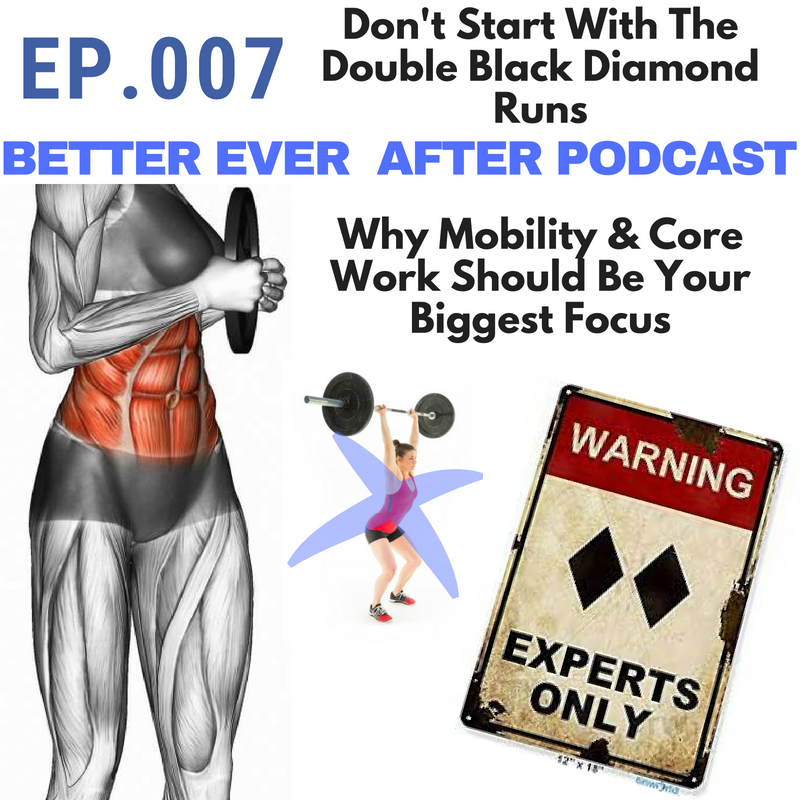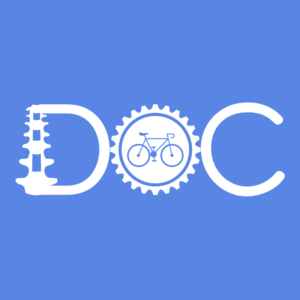I always believe in identifying first principles and moving outward from there. Trying to identify the point – the why – behind choices and actions and answer the question – “Why am I actually doing this”?
It is just who I am , I am a cerebral thinker and have always driven teachers nuts by repeatedly asking why, why, why, why – I like when things make sense and believe in being as highly effective as possible by ensuring that what I am doing is going to yield the results I am in interested
And when it comes to working out, exercising or training – however you want to phrase it, most of us have it backwards. We are trying to start on the black diamond hills being able to go down the green runs.
Training is meant to train for something! That was why athletes starting to go to the gym in the first place – to get bigger, stronger and faster for their particular sport. Those that do it best, do it in the most specific way possible that uses drills and exercises that mirror the demands of their particular sport – the more specialized the training program – the better the results.
And this is where I think that most people, myself included should take a cue from the pro’s to determine how and why we should be training – but we should 100% not be mimicking what they are doing
There is so much BS in the gym and training community it is difficult to wade through – a lot of fabricated culture and image – you see it all over Instagram and I am afraid that I have been guilty of it at time – pushing certain fads or myths – but when you get down to the first principles of why we go to the gym and workout i think we are motivated by a few factors:
-
Looking better and sexier
-
Losing weight
-
Being healthier overall
-
Getting stronger
-
Have better energy
And the unspoken goal is that we want to feel better and not be in pain. In order to achieve your goals however there are certain requirements, you have to be able to move in a safe and controlled way. This is the first principle of being able to go to the gym and working out. If you are not able to move your joints in a safe and controlled manner, this is how injuries occur. Repetitive strain is good for building strength and to reach your goals in the gym, as long as it is not above the threshold that your body can handle.
The issue is that when you do a bootcamp, or workout with compound and difficult movements like the squat, lunges, or complex movements in the crossfire world, it requires a solid base of foundation skills and strength no different than is required to be able to ski a double black diamond run. We look at it differently because there isn’t the same visible risk of injury but it is there. Like skiing, there are certain skills you have to master in terms of controlling your spine and moving your joints to be able to do it safely, whether moving around on an average day of going to the gym.
With skiing you have to be able to stop, turn, control your speed, do moguls etc – for working out – you have to be able to brace your spine, hinge your hips, hollow the core, activate the glutes, stack your spine, lift your arms fully overhead. these are some of the basic skills needed to move properly and if you are not familiar with them or can’t do them, you might be barrelling down the wrong run unprepared.
I have never understood why someone would do a workout or activity that is going to put them at greater risk than the potential benefit. Crossfit is the perfect example when someone is doing drills that are beyond their ability. The issue is not Crossfit in the same way that the issue would not be the double black diamond ski run when a beginner attempts it: doing anything beyond the ability of the body can result in injury.
When you think about functional training by athletes for an event, the event that 95% of us train for is just average life events with some higher demands at for sport and the gym. Truly functional training would be geared towards having a bulletproof core to stay injury free in the gym, to be able to sit at a desk without getting back or neck pain, to be able to lift kids out of the car or crip or to simply garden for a few hours. What is the point of being able to matter if you have squat a hundred or more pounds if you can’t survive a day at work without back or neck pain – it seems counter-intuitive to me.
The vast majority of cases that we review in our practice are either the result of poor joint mobility and/or insufficient core strength to meet the demands of someone’s daily activities. We see people that do boot camp instead of working on their core and mobility work. Of course, the latter isn’t as much fun – boot camps and working out with a group is awesome, but by trying to eliminate one problem, where your goal is weight loss or something else, another one is being created.
Anybody that is new to exercising or working out should be spending the first couple of months simply working on their core strength as much as possible and improving their mobility so that their body is prepared to do the fun stuff.
The first principle again is that to move safely there are certain requirements, in the same way, there are certain requirements to be healthy. The spine and the other joints of the body have to be stable and there are certain skills to be mastered on the green runs before moving onto the double black diamond.
I realize that no one starts at the gym and wants to spend the first couple months on a mat doing side bridges and bird dogs but to give yourself the best chances of actually reaching your goals, pain-free and without making yourself feel worse with injury, it simply is required.
To optimize the body and ensure it moves and functions properly as we progress onto more difficult movements and tasks, there is a progression that we should move through.
First learning to isolate/turn on different muscles and move joints independently of each other. Then improving the mobility and strength at each joint without the addition of weight comes next. As our mobility improves we should move to strengthen those joints in safe positions with isometric (help) exercises before moving onto strengthening with small movements and then compound movements like squats.
You would never think about doing a ski run that is well beyond your capabilities because the health risk is obvious. There are fundamental skills that are required for skiing and all sports: the gym and movement of the body, in general, is no different.
In this podcast, we discuss why 95% of us should be focusing mostly on mobility and core strength as part of reaching our health goals whether it is weight loss, strength or just looking better.
Download the MOVE Curriculum on our show notes page if you need help figuring out how to strengthen the core, mobilizing your joints, protecting your spine and reaching your physical goals.




